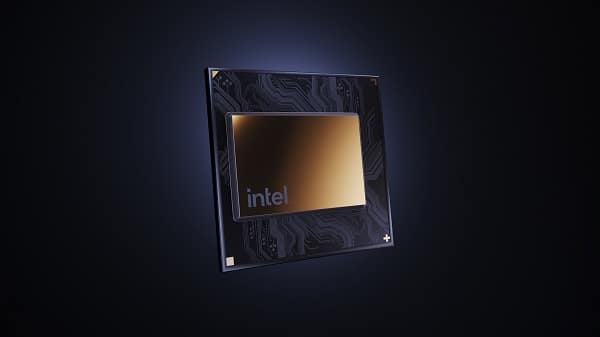Raja Koduri, Intel Senior Vice President, first hinted at the intention of the company to enter the Bitcoin mining space in the previous year. Now, the company works towards making a new energy-efficient chip dedicated to mining cryptocurrency.
The Semiconductor manufacturing giant Intel is finally ready to explore the world of cryptocurrency at the International Solid-Waste Circuits Conference (ISSCC) next month. The said event is where the company will present the Bonanza Mine Chip, an energy-efficient Application-Specific Integrated Circuit (ASIC) designed to mine cryptocurrency.
Konduri stated, “Blockchain is a technology that has the potential to enable everyone to own much of the digital content and services they create. Some even call it an inflection point in computing, fundamentally disrupting the way we store, process, and transact our digital assets as we usher in the era of metaverse and Web 3.0. No matter how the future evolves, it is certain the availability of a lot more compute to everyone will play a central role.”
Intel has also announced its plan to engage as well as promote a secure, open blockchain ecosystem. The company will exert extra effort to advance that technology sustainably. The new energy-efficient chip for crypto buyers will be a fintech company owned by Jack Dorsey, formerly known as Square – the Block.
The chip-making giant will call the crypto chip a blockchain accelerator. That ship was rumored to ship later this year. Aside from the Block, GRIDD Infrastructures was also reported to pre-order the technology.
The Senior Vice President said, “We are mindful that some blockchains require an enormous amount of computing power, which unfortunately translates to an immense amount of energy. Our customers are asking for scalable and sustainable solutions, which is why we are focusing our efforts on realizing the full potential of Blockchain by developing the most energy-efficient computing technologies at scale,”
He added, “Our blockchain accelerator will ship later this year. We are engaged directly with customers that share our sustainability goals. Argo Blockchain, BLOCK (formerly known as Square), and GRIID Infrastructure are among our first customers for this upcoming product. This architecture is implemented on a tiny piece of silicon so that it has minimal impact on the supply of current products,”
The new chip is a significant bet for the company as it may change the finance and how people own digital assets through the Non-Fungible Tokens (NFTs). NFTs and cryptocurrencies are plagued by scams, theft, and fraud problems. However, Intel aims to address the extraordinarily large consumption of energy.
Crypto mining involves a a computationally taxing process, where transactions are recorded into the Blockchain, a widely shared database. The miner who first solves the complex computing problem can take advantage of the newly minted cryptocurrency as a reward. In short, having the most powerful machines means a strong incentive.
Koduri said that the company contributes to blockchain technologies development alongside the roadmap of energy-efficient accelerators. He stated, “Intel will engage and promote an open and secure blockchain ecosystem and will help advance this technology in a responsible and sustainable way.”
“We expect that our circuit innovations will deliver a blockchain accelerator that has over 1000x better performance per watt than mainstream GPUs for SHA-256 based mining,”
The company has dedicated many decades to researching reliable cryptography that will hash ultra-low circuits and techniques. Blockchain technology has a great potential of enabling everyone to own digital content and services they create as the company ushers in the metaverse and Web 3.0 era.
Konduri said, “To support this and additional emerging technology, we have formed the new Custom Compute Group within Intel’s Accelerated Computing Systems and Graphics business unit. The objective of this team is to build custom silicon platforms optimized for customers’ workloads, including Blockchain and other custom accelerated supercomputing opportunities at the edge.”
He further said, “Onward, we aspire to leverage technologies from our zetta-scale computing initiative to deliver energy-efficient solutions that make our tomorrow better than our today.”
When discussing Intel’s gaming GPUs in December 2021, Koduru said, “I think blockchain is a transaction thing that is run much more efficiently than the burning of hardware cycles,” He added that it was “something we are working on.”
Meanwhile, whether the new crypto chip will remain embedded in a research project or be released to the public is not yet clear.
The crypto chip was not the first hint that Intel plans to enter the crypto world. In October, the company has announced that its upcoming graphics cards would not include cryptocurrency mining restrictions in response to graphics-chip maker NVIDIA’s “less desirable” cards for Ethereum miners.
NVIDIA is one of Intel’s major rivals and has profited sizably from crypto mining. Because of the appetite of miners for the Graphics Processing Units (GPUs), gamers are having a hard time finding graphics cards. However, major cryptocurrency mining hardware suppliers like Bitmain, MicroBT, and Goldshell use ASICs customized for crypto mining.
Intel Vice President and General Manager of Clients Graphics Products and Solutions Roger Chandler said, “We’re not designing this product or building any features at this point that specifically target miners. As far as actions we’re taking to avoid or lock them out, it’s a product that will be in the market, and people will be able to buy it,”
However, that news represents Intel’s major turn into the Bitcoin mining industry. On the latest data of the Cambridge Bitcoin Electricity Consumption Index, around 137 terawatt-hours of energy consumption yearly are due to Bitcoin mining. In other words, Bitcoin uses more energy compared to most countries.
That energy consumption generates greenhouse gas equivalent to more than 9 million average electricity consumption of homes per year or 60 billion pounds of burned coal.
Cryptocurrency and Blockchain only gain momentum as time goes. However, crypto mining has raised some environmental concerns because of the heavy energy consumption that the new chip from Intel plans to solve.
Koduri said, “The environmental impact of cryptocurrency mining has become a major concern.”
The power-hungry mining rigs usually get the power from natural gas power and coal plants, which in return, harm the environment while contributing to blackouts and high electricity bills.
Currently, bitcoin mining generates 31,000 tons of electronic waste per year. The lawmakers in the US have introduced this issue to Congress and discussed how to address and resolve the skyrocketing energy consumption related to crypto mining.
With the boost in efficiency, miners can possibly cut costs while reducing the power consumption that deprives someone of affordable power and worsens global climate crisis issues.
However, no one should expect that there will be a radical improvement in the mining’s environmental impact. The crypto’s proof of work approach is prevailing and pushes the miners to address the increases since more significant horsepower will arrive to solve it.
If Intel’s Bonanza Mine has an effect on the energy consumption of Bitcoin is still unclear. An Intel spokesperson said that the company plans to share more details in the future and added that “Intel has done design work around SHA 256 optimized ASICs for several years beginning with pathfinding work done in Intel Labs.”
ChesWorkShop commits to presenting fair and reliable information on subjects including cryptocurrency, finance, trading, and stocks. However, we do not have the capacity to offer financial guidance, advocating instead for users to conduct their own diligent research.

